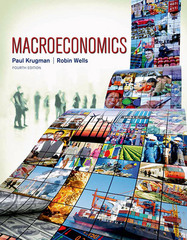Question
Consider an industry with three firms, 1, 2 and 3, producing a homogenous product and competing in prices. Market demand is given byD(p) = 120p.
Consider an industry with three firms, 1, 2 and 3, producing a homogenous product and competing in prices. Market demand is given byD(p) = 120p. Firms evenly share the demand in case of price tie at that price. All firms have the same technology of production and a cost function given byC(q) = 30q.
(a) Derive the best response function of a firm and give the Nash equilibrium in prices.
(b) Derive the price that would maximise firms' joint profits and the total profit at this price.
From now on suppose the firms compete in prices in a repeated game with an infinite hori- zon. All firms have the same discount rate of.
(c) Construct a subgame perfect equilibrium with trigger strategies in which firms charge the industry profit-maximising price, and punish deviation by reverting for- ever to the Nash equilibrium of the stage game. Give the condition under which this equilibrium holds.
(d) Suppose firms can observe each others' prices only with a lag of one period. That is, periodt's prices are observed only before periodt+ 2's prices are set. Con- struct a subgame perfect equilibrium with trigger strategies in which firms collude on the industry-profit maximising prices and punish deviation by reverting forever to the static Nash equilibrium. Under which condition does this equilibrium hold?
Step by Step Solution
There are 3 Steps involved in it
Step: 1

Get Instant Access to Expert-Tailored Solutions
See step-by-step solutions with expert insights and AI powered tools for academic success
Step: 2

Step: 3

Ace Your Homework with AI
Get the answers you need in no time with our AI-driven, step-by-step assistance
Get Started


